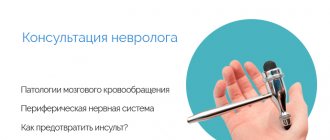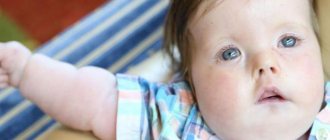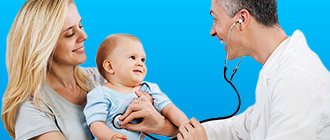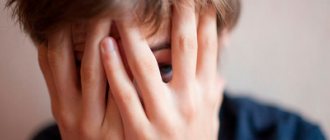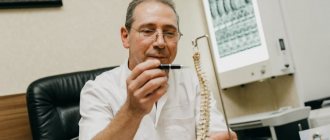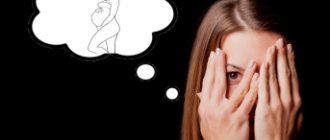Causes
Causes of minor cerebral dysfunction (MMD):
- genetic influences;
- maternal health problems during pregnancy;
- difficult childbirth;
- encephalitis (subcortical, cortical, cerebellar, brainstem);
- early childhood unconsciousness;
- injuries affecting the mediobasal or mesencephalic part of the brain;
- diencephalic syndrome;
- influence of nutrition.
Products that support hyperactivity, fatigue, behavior disorders and activity in children:
- food containing dyes and artificial flavors (there are many of them, most are made from coal tar);
- ordinary food components (in chemically processed fruit juices, chocolate, ready-made cereals, etc.);
- various treats (desserts, ice cream, nuts, milk);
- difficult to digest foods (eggs);
- simple sugars (cakes, candies, chocolate, ice cream, cookies).
Sometimes, when diagnosed with MMD, visual disturbances are present - astigmatism, amblyopia, etc.
Symptoms
Minimal brain dysfunction in children is manifested by the following symptoms:
- attention deficit disorder;
- hyperactivity;
- hypoactivity;
- uneven development of intellectual abilities;
- disorder in the dynamics of mental processes;
- anxiety;
- low endurance;
- impulsiveness;
- mood swings;
- perception disorders, etc.
These signs do not always mean MMD; in neuroscience, factors of the social environment, attention seeking, conduct disorder or temperamental characteristics are taken into account.
Residual encephalopathy code according to ICD 10
The code for residual encephalopathy according to ICD 10 coding is a rather controversial issue. Personally, in my practice I use the code G93.4 - encephalopathy unspecified, and, at least for now, this code does not cause any complaints from insurance companies. And in general, soon there will be an ICD-11 cipher system. Someone, as far as I know, uses the code G93.8 - other specified brain damage, but it is more logical to include radiation damage in this terminology. For traumatic effects, you can use code T90.5 or T90.8 (consequence of intracranial and consequence of other specified head trauma).
When making a diagnosis, it is also important to indicate in parentheses the damaging agent or influence (a consequence of a neuroinfection, a consequence of a head injury from such and such a year, etc.), indicate the syndromes (vestibular-coordinating for dizziness, cephalgic for headaches, etc.) , it will also be important to indicate the severity of the syndromes and the stage of compensation of the process.
Classic treatment
Once the diagnosis of MMD is made, the neurologist prescribes appropriate treatment. Therapy includes several methods.
Pharmacotherapy
Minimal brain dysfunction can be treated with several groups of drugs.
Nootropics
This is the first line of drugs used in drug therapy. They increase blood flow through the blood vessels of the brain, providing a greater supply of oxygen and glucose (substances necessary for nerve cells). This group includes:
- Piracetam;
- Encephabol;
- Energy ball.
Psychostimulants
Suppresses symptoms of insufficient central nervous system activation, such as inattention and hyperactivity.
But psychostimulants lead to depression of growth hormone in children and, consequently, to a decrease in body height and weight (compared to peers), and have side effects. There is a risk of addiction when using them; their effect is not permanent.
Thymoleptics (antidepressants)
They increase the level of serotonin (a neurotransmitter that ensures good health) and suppress the symptoms of hyperactivity. Representatives of this group:
- Deprex;
- Prozac;
- Seropram.
EEG-BOS
EEG biofeedback is a very specific method for increasing desired activation of the nervous system. Effect of therapy:
- training attention and concentration, self-control and self-discipline (calming impulsivity, hyperactivity);
- improvement of intellectual indicators;
- self-education of the brain through biofeedback.
When the brain receives an instant message that its waves are disordered, it can learn to correct them.
Electrodes attached to the head record brain waves. The brain wave is visible on the screen. It is translated into the form of a video game, which the patient “plays” only with the power of his thoughts and will, without a keyboard or mouse. The game is controlled by brain activity. When activity in the desired brain wave increases, the “player” experiences successful results. With increasing activity in an undesirable structure, success in the game is leveled out. The brain gradually responds to the motivational instructions that the computer gives it, rewarding it for good results in the game. This is how the brain develops the process of learning new, more appropriate frequencies of brain waves. This is the brain itself working on itself.
Advisory corrective procedures
For various disorders when diagnosing MMD in a child, certain procedures are used in neurology:
- for speech defects – speech therapy;
- for behavioral disorders - changing the regime, changing the attitude towards the child, autogenic training;
- learning disabilities – special corrective procedures.
Consult specialists at the pedagogical and psychological center about corrective action options.
Self-medication
Self-medication uses dietary changes and traditional therapeutic methods.
Healthy eating:
- Exclusion from the diet: sweets, processed foods, instant foods, sweet sodas, and other processed foods with excess added dyes and flavors.
- Inclusion in the diet: fruits, vegetables, whole grains, cereal sprouts (sources of B vitamins), legumes (sources of lecithin).
Nutritional supplements, vitamins and minerals:
- Ginkgo biloba - increases venous blood flow, thereby giving nerve cells a greater supply of oxygen and glucose.
- Magnesium and calcium are necessary for the functioning of nerve cells.
- B-complex – important for the proper functioning of the nervous system.
- Lecithin – improves memory.
Natural and Complementary Treatments:
- aromatherapy;
- yoga;
- kinesiology;
- constitutional homeopathy.
Upbringing
When raising children and adolescents with minimal brain dysfunction, it is recommended to follow certain principles.
Quiet, emotionally harmonious family environment
It is important to show your child love so that he is confident in it. Parents should try to remain calm and level-headed in tense situations; The nervousness of the parents is transmitted to the child, the effect of hyperactivity intensifies. Let him know the stability of parental support, family background, security, understanding of his problems.
Family order
The child must get used to the usual daily routine - sometimes very stereotypical. He must know what is expected of him in the family. The rules of coexistence must be clearly defined so that the child knows when he crosses them and when he does not. The children's world should be clear and well organized.
Order is important because a child has no “internal order” of his own, only chaos, which can make everything else seem chaotic to him.
Subsequence
Consistency does not mean terror, on the contrary. It is important to act kindly and very patiently. Parental instructions and the completion or non-compliance of tasks must be adequately monitored. If a task is beyond the child’s capabilities, you should help him, sometimes just support him.
More frequent nonviolent control ensures that the child automates the necessary actions, making the need for control less significant.
Unification of education
If one parent is consistent in parenting and the other is not, the child takes advantage of the “weaker” parent or does not listen to either parent. Therefore, it is important to unite education and agree on precise rules. Inconsistency in parenting almost always leads to worsening symptoms of a child's cerebral dysfunction.
Focusing on the positive aspects of a child's personality
Let your child experience success. Rather, ignore negative behavior (if possible) and praise him for doing the right thing. Remember: the supply of punishments will quickly be exhausted, the child will get used to them, which will minimize their effect.
Direction of the child's activity
Increased activity not only helps you focus on multiple tasks at once, but also directs your energy in the right direction. Therefore, it is advisable not to suppress activity, but to allow children to “discharge” whenever possible. It is important to provide your child with ample opportunities to relax. This can also be done during certain activities by changing activities, changing positions, etc.
For most children, simple, clearly stated, reasonable, and understandable rules are appropriate.
It is advisable to follow these principles even when raising children without minimal brain dysfunction. But for children with ADHD, they are a vital necessity.
Treatment of residual encephalopathy
There is no consensus or standard of care for the treatment of residual encephalopathy. Various groups of neuroprotective drugs are used (Cerebrolysin, Actovegin, Ceraxon, Gliatilin, Glycine, Gromecin, etc.), antioxidants (Mexidol injectable and tablet forms, Thioctic acid, etc.), in some cases they resort to vasoactive therapy (Cavinton in the form of injections, tablets, including for resorption for swallowing disorders). For dizziness, betahistine preparations (Betaserc, Vestibo, Tagista and others) are used.
Important measures will include physical therapy (including vestibular gymnastics for vestibular dysfunction and dizziness), massage, and physical therapy techniques. Not least of all are measures to normalize lifestyle (giving up bad habits, playing sports, normalizing work and rest schedules, healthy eating, etc.). It is important to know that the prognosis for residual encephalopathy is usually. positive and treatment can have an effect.
Preventing the effects of MMD on a child
In preschool age, timely recognition of the symptoms of minimal brain dysfunction is important.
At school and at home you need to:
- help the child achieve success (search for positive aspects, highlight certain abilities, etc.);
- teach him to perform various tasks (feel their meaning, purpose, necessity);
- help you find your place in the team (increase prestige, do not point out character traits);
- help to realize oneself;
- keep in mind that rewards “reinforce” correct behaviors; therefore, do not spare praise for little things (even for attentiveness);
- appreciate efforts (even if the result is not entirely successful);
- set short-term goals for your child;
- individually test his knowledge (outside the classroom atmosphere full of irritants);
- provide the child with enough love;
- monitor fatigue and attention during classes, take into account increased fatigue in class and during the day (especially in the first year of school).
Prenatal prevention
For these purposes, the so-called “prenatal education” is a method of specific stimulation of the fetus during pregnancy. Thanks to precise sound stimulation, the fetal nerve cells are activated and the maturation of brain activity is accelerated. According to the study, such stimulated babies are born without tears, with open eyes and a hint of a smile, and have greater weight and height at birth. They begin to talk and walk earlier than their peers. At the age of 56, the IQ of the “stimulated” people was 120-150 points.
Nutrition for the expectant mother
During pregnancy, a correct and responsible lifestyle is necessary. Increasing the intake of vitamins, especially C, B, a sufficient amount of minerals in the diet (in particular, calcium is necessary for building bones and the normal development of neuromuscular function in the fetus).
Inappropriate diet:
- A lot of sweets;
- semi-finished products;
- instant food products;
- sweet lemonades;
- products containing a high percentage of flavors and dyes.
Suitable food:
- fruits;
- vegetables;
- cereals;
- legumes
Symptoms and diagnosis of residual encephalopathy
The symptoms of residual encephalopathy can be very diverse. With residual encephalopathy, syndromes such as cephalgic (headaches), vestibulo-coordinator (various types of dizziness, as well as impaired coordination of movements, including instability in the Romberg position), asthenic (weakness, fatigue), neurotic (mood lability) may occur. , cognitive impairment (decreased concentration, memory, etc.), dyssomnia (sleep disorders) and many others. Dizziness occurs in more than 50% of cases.
There are no clear diagnostic criteria for establishing a diagnosis of residual encephalopathy. Typically, the diagnosis is made on the basis of complaints (diagnosed syndromic), anamnesis (the presence of an established damaging effect on the brain), as well as on the basis of a neurological examination with the identification of a neurological deficit. In the neurological status, it is important to pay attention to anisoreflexia, reflexes of oral automatism, coordination disorders, cognitive state and other organic symptoms.
Also important for making a diagnosis are neuroimaging examination techniques (MRI of the brain), as well as functional studies such as EEG, REG.
Forecast
In a third of cases, minimal cerebral dysfunction goes away on its own: the central nervous system of such people matures later, but without consequences.
The second third is compensated: external signs may disappear from a person’s behavior, even in the absence of changes in the neurophysiological picture. For example, a person with dyslexia will learn to read; but when he is assigned to read during an EEG study, a characteristic slowdown in brain activity occurs. Compensation may fail due to stress.
The prognosis of the last third of patients is worse: they do not “outgrow” and are not compensated. This group usually has social problems.
